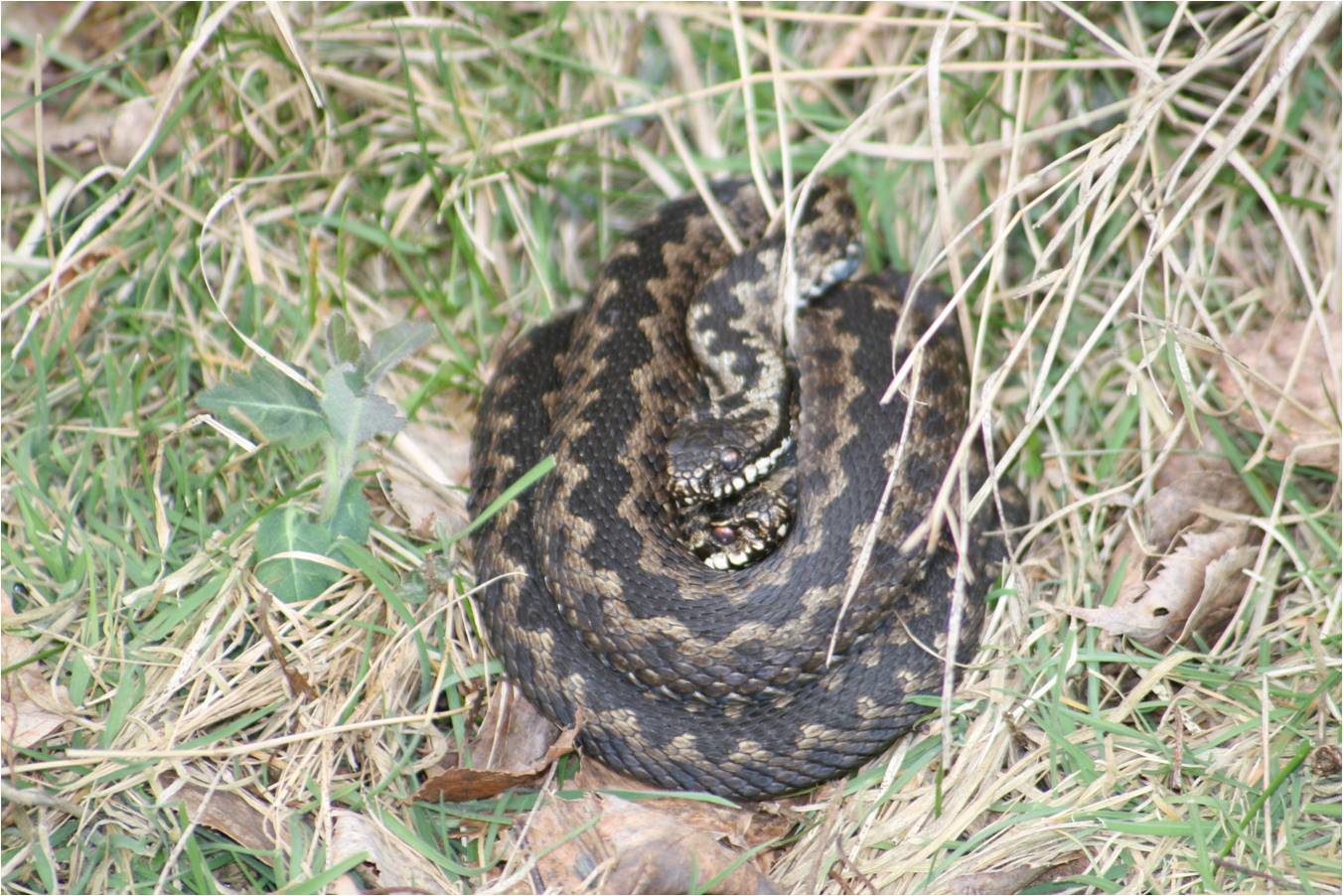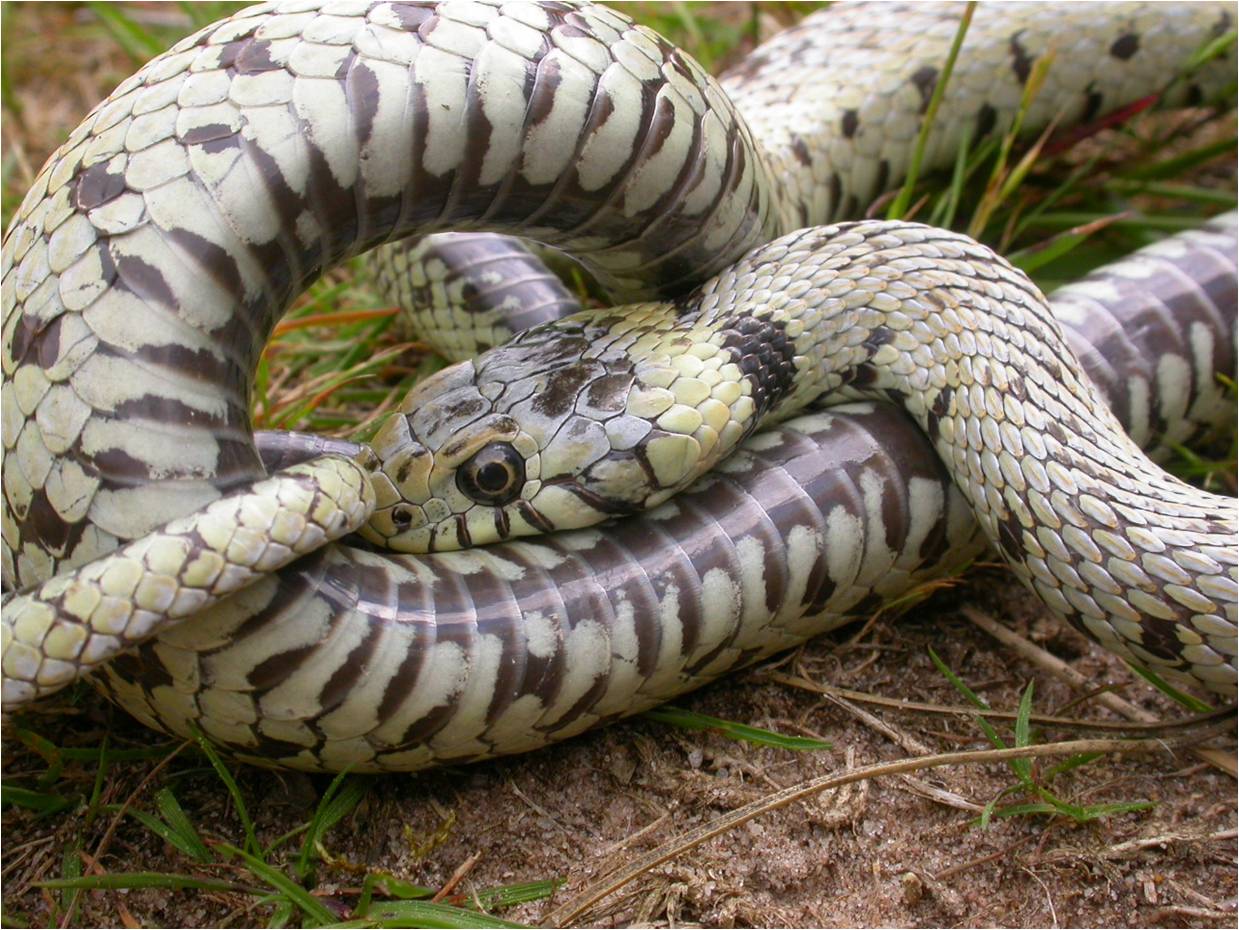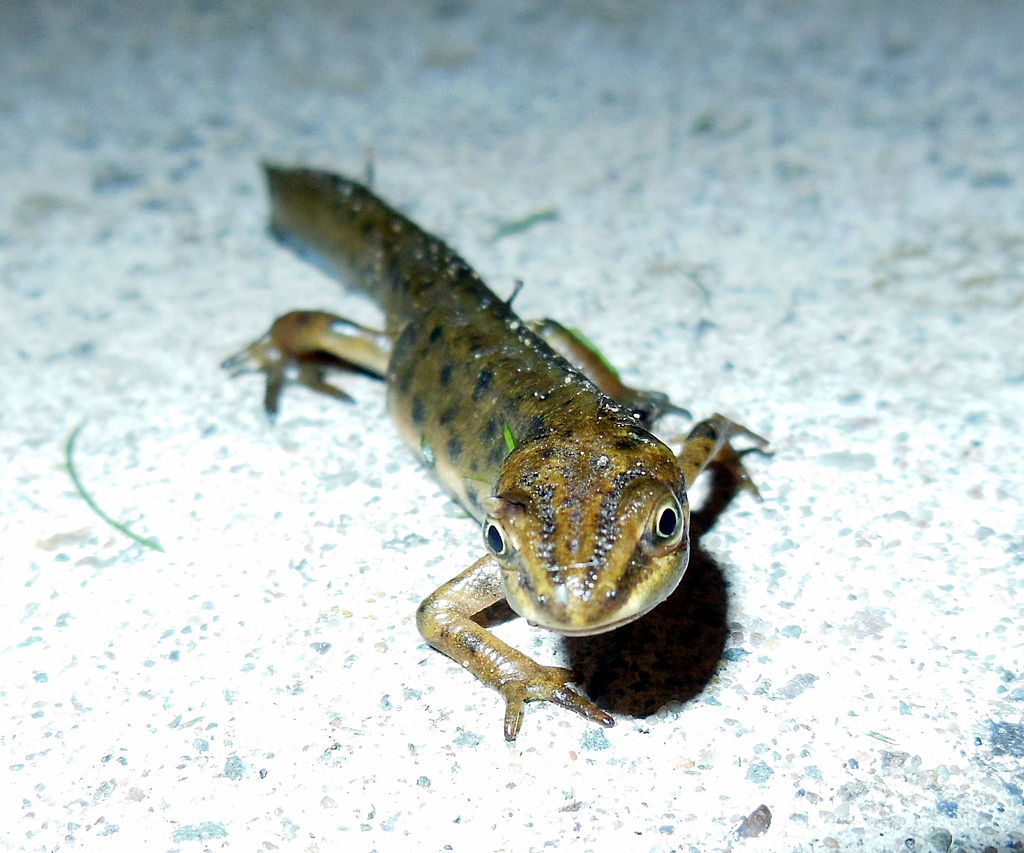



Around High Lodge are old pits now filled with water which are ideal breeding habitats while the open grassy areas are used by amphibians and reptiles for foraging and basking. Log piles and leaf litter are sites for shelter and hibernation.
The Adder Vipera berus has a heavy body with a prominent zigzag stripe along the middle of its back. Males emerge from hibernation in mid-March and females about three weeks later. They bask in warm sunshine and sometimes there are small groups curled up together. Adults shed their skin several times in the year and return to hibernation in October.
Thetford Forest's sunny forest glades and sandy heaths are ideal habitat for them.

The Grass Snake Natrix natrix is olive-green or olive-brown on its upper side, with a yellow collar and a pale creamy throat. The grass snake lays eggs which hatch in late summer. It prefers damp meadows, marshes, ditches and rivers and can sometimes be seen swimming with its head held above the surface of the water.

The Common Lizard Zootoca vivipara is covered in a pattern of scales and ranges from 140 to 180 mm in length but half of the length is the tail. It is active from April to early October, often basking in the sun to achieve its preferred body temperature of about 30℃. In the Forest, its preferred habitat is logs, tree stumps, south-facing banks, grassy clearings and sunny glades.
Viviparous lizard (Zootoca vivipara) in the Aamsveen, The NetherlandsCommon Lizard Zootoca vivipara
The Common Frog Rana temporaria lives on land in damp places for much of the year, but breeds in ponds in February and March, with frog spawn laid in clumps. Its colour varies from greenish grey to yellowish-brown. A frog moves by hopping or leaping, whereas a toad crawls or walks.

The Common Toad Bufo bufo has a dry warty skin and moves by crawling or walking though it can hop short distances to escape danger. Toad eggs are laid in long strings and the toads gather together at their breeding ponds.

The Smooth Newt Lissotriton vulgaris is the most common newt and has smooth skin and a flattened tail. The males have a crest in the breeding season. It breeds in water in summer and spends the rest of the year in grassland and woodland, hibernating over winter.

The Great-crested Newt Triturus cristatus is the largest British newt reaching up to 150mm in length. Its belly is yellow or orange, blotched with black and its tail has a silvery-white stripe. In the breeding season the males develop a high dorsal crest, with a characteristic notch above the base of the tail. It needs ponds for breeding but open grassy areas for feeding and basking and old walls or log piles for hibernation.
